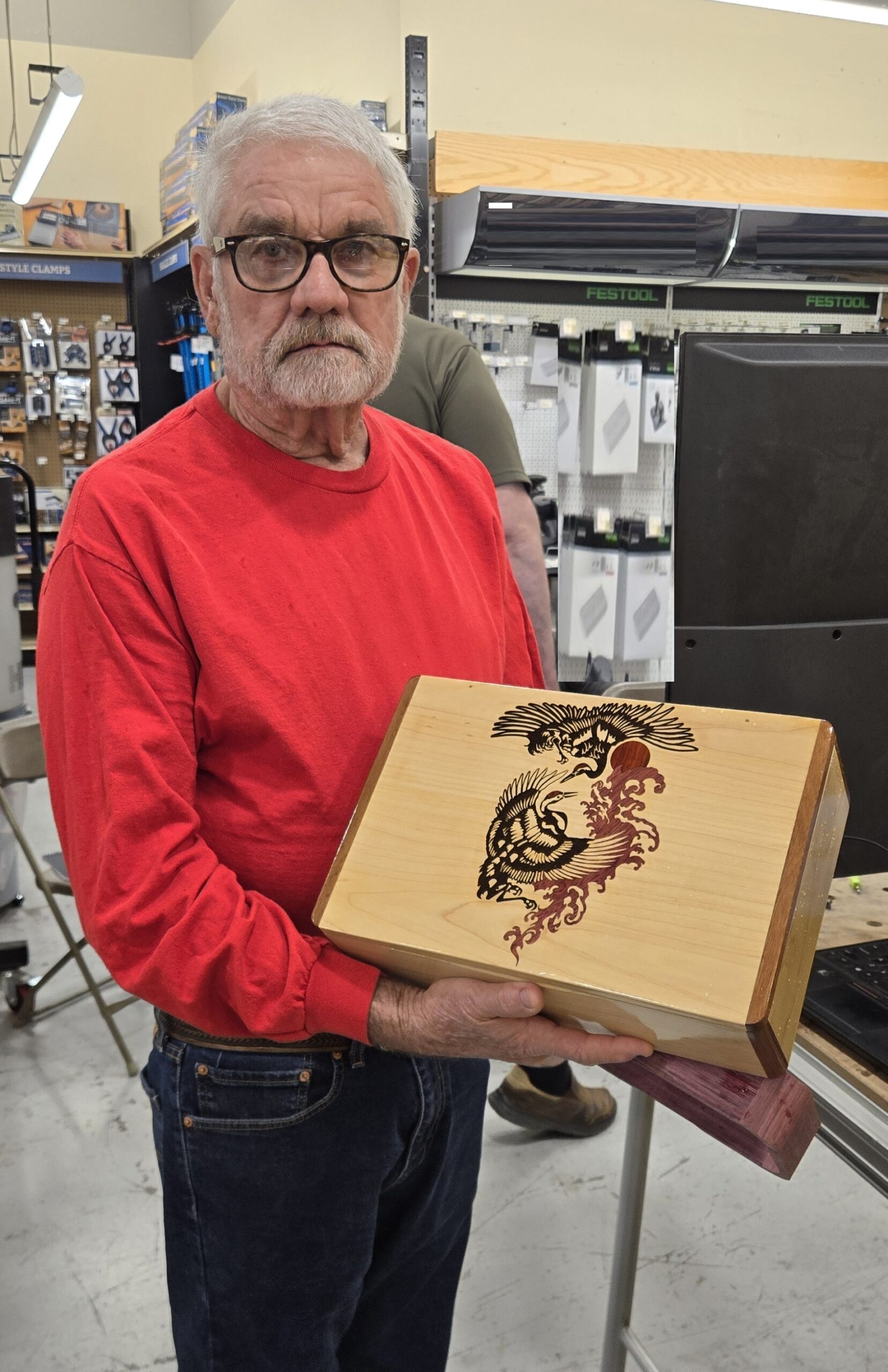The March’24 CNC training for the Inland Woodworkers was held at the Rockler Ontario store, and there were 12 in attendance. The instructor was Kenneth Thomas and the topic was All About Router Bits. Kenneth started the conversation by comparing lower and higher quality bits. Lower quality items can be purchased on Amazon and eBay. They are relatively cheap, but lack dimensional tolerances. They may incur vibration and breakage more easily. They are good for learning about speeds and feeds; the pain of breakage is not too severe! Premier tools (for example, Amana) are expensive and not designed for learning. They hold excellent tolerances and spin evenly about their center axis.

Once the proper bits have been procured, the next step is to enter them in the Vectric database. Amana Tools ( https://www.amanatool.com/cnc-tool-databases-for-fusion-360tm-vectric ) and IDC Woodcraft ( https://idcwoodcraft.com/pages/database-downloads ) are two companies that maintain databases that can be imported into Vectric. These databases are good starting points, but speeds and feeds should be adjusted for each CNC machine. Stiffer production machines can handle faster parameters; less rigid machines require slower parameters.
So, how fast is too fast? Bit breakage! And how slow is too slow? If the machine is generating sawdust, the spindle is rotating too fast, relative to the travel speed. If it is cutting chips, the speed is right. When the spindle is too fast, the tool will burn the wood. Sawdust will embed itself in slots; chips will get ejected, and when they eject, they remove heat. Remember, only compensate one variable (either rotational speed or traverse feed) at a time.

When burning occurs, adjust the parameters. Also, add a shallow last pass as a cleanup. Make sure to cut enough to remove any burning. Using 0.005” is too small. Pick something like 1/16” instead. Also, consider changing the style of bit. Run a downcut bit slower, and run longer bits slower.
Try using the largest diameter shank as possible. A ¼” cutting diameter with a ½” shank is stiffer than a ¼” cutting diameter with a ¼” shank.
Clean your bits to maintain quality cuts. Pitch will mask the cutting edge and reduce the chip ejection efficiency. Simple green is an affordable cleaner that works well. Soak the bit overnight. Remove bearings before soaking the bits.
Show & Tell
Gene Hamilton shared a few of his projects, showing off his outstanding inlay work. One of his projects was a box for storing tea bags. The inlay work is absolutely stunning.



Congratulations to Rockler on reaching its 70th Anniversary. If you missed the celebration, you missed a great event.



